Enjoy antique books? Enjoy the structure of the book? Check out some of these historic models.
Medieval Bindings

Romanesque binding made at Jim Croft's Old Ways.

Brain tanned leather over alum tawed sewing supports.

My first brass clasps

Gothic Model

Gothic endband on gothic model

Clasps made by the artist on gothic model

Three parchment models, limp, semi-limp and stiff board bindings

Fore edge view of the same three parchment models

Paper case model of a limp vellum binding

This model is based off of Jen Lindsay's article in "The New Bookbinder" vol. 11, 1991

View of case with fore edge flaps, made with Hook Pottery Case Paper
17th-19th Century

18th century edge decoration

Half leather 18th century binding

Another view of the half leather 18th century model

Variation of Italian Vein marbled endpapers
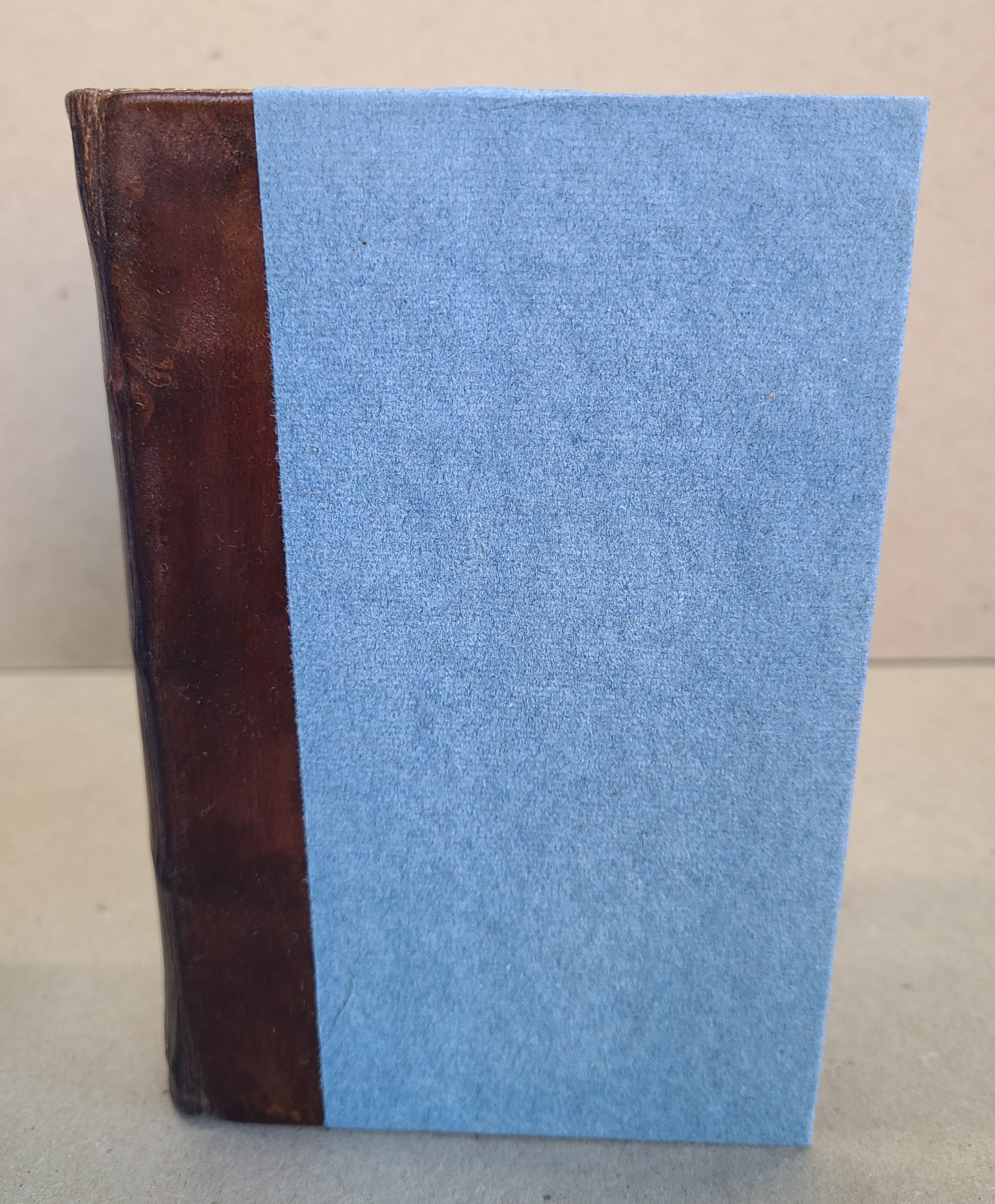
Front view of the simpler quarter leather 18th century binding

Spine of the quarter leather 18th century binding

Fore edge view of the quarter leather 18th century binding showing the hand marbled endpapers, the edge decoration, and sewn endbands
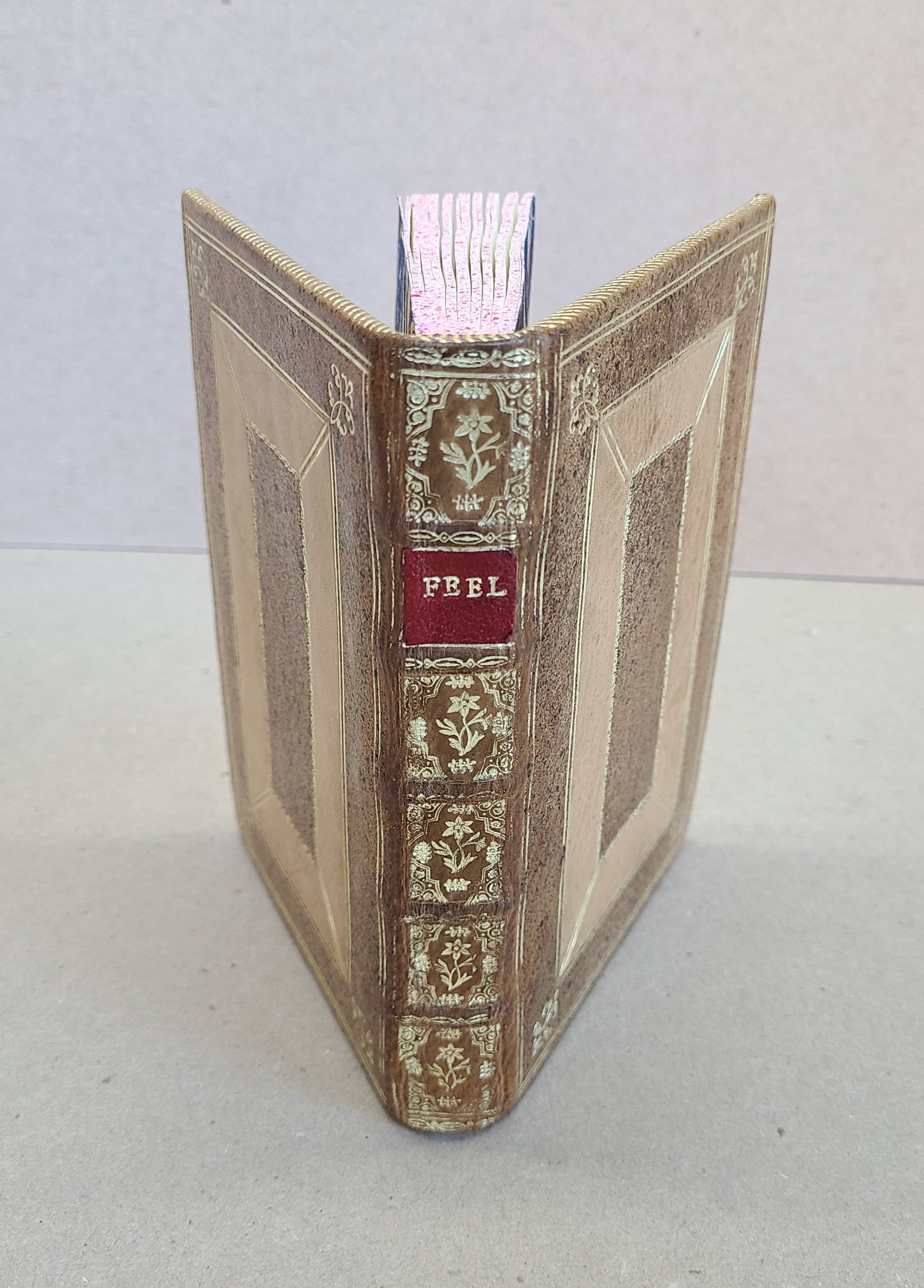
Run up gilt spine on full calf 18th century binding

Gilt "Cambridge" panel on an 18th century calf binding

Fore edge view showing the edge decoration, historical patterned marbled endpapers, and sewn endbands
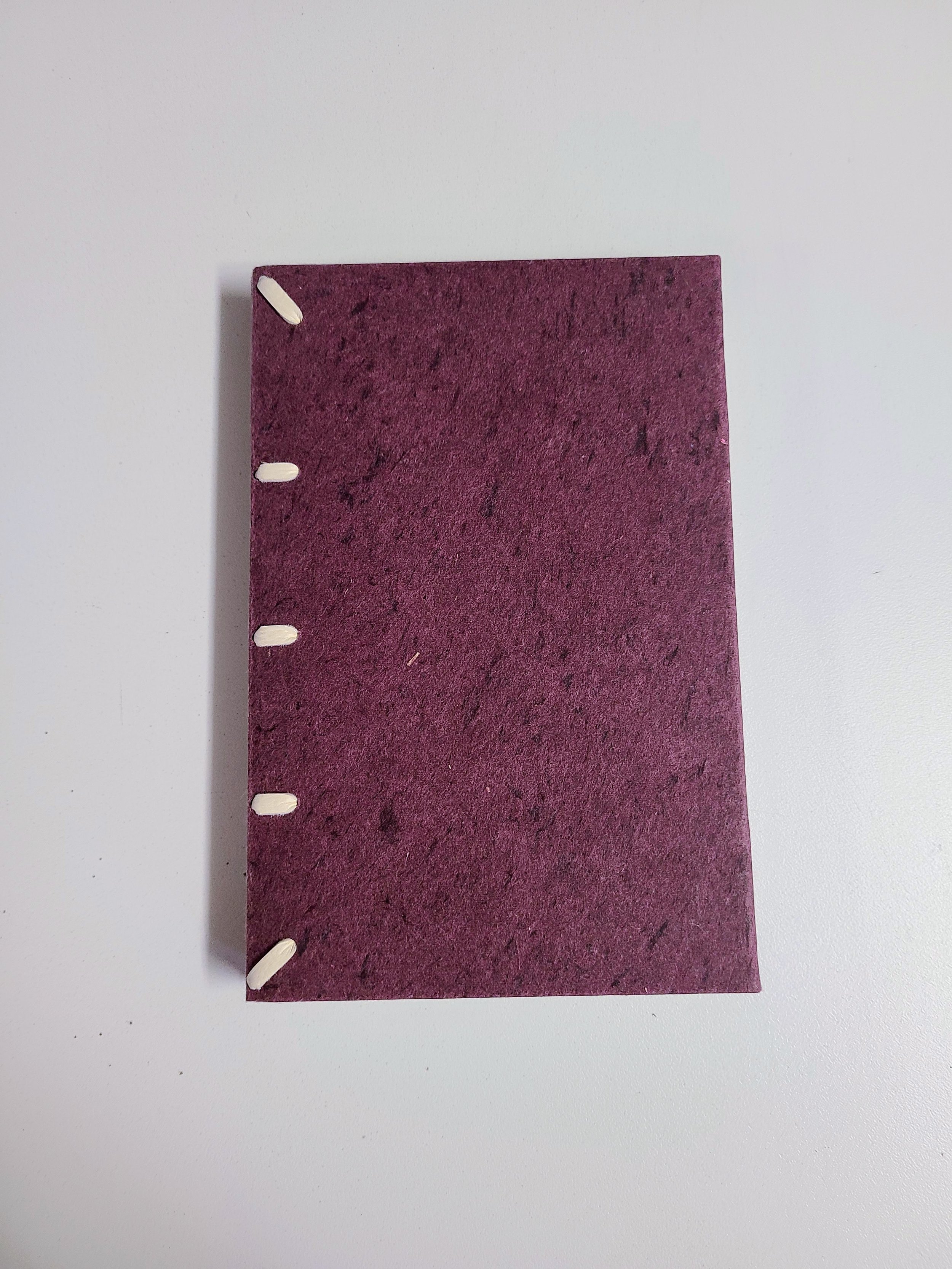
Paper case model of a limp vellum binding

View of case with fore edge flaps, made with Hook Pottery Case Paper
19th and 20th Century bindings

18-20th Century "Trade Binding". Often half leather (spine and corners) with a tooled spine.

A pop of fun inside a traditional binding

Popular in Northern Europe, especially during the great depression. A few different styles of millimeter binding.
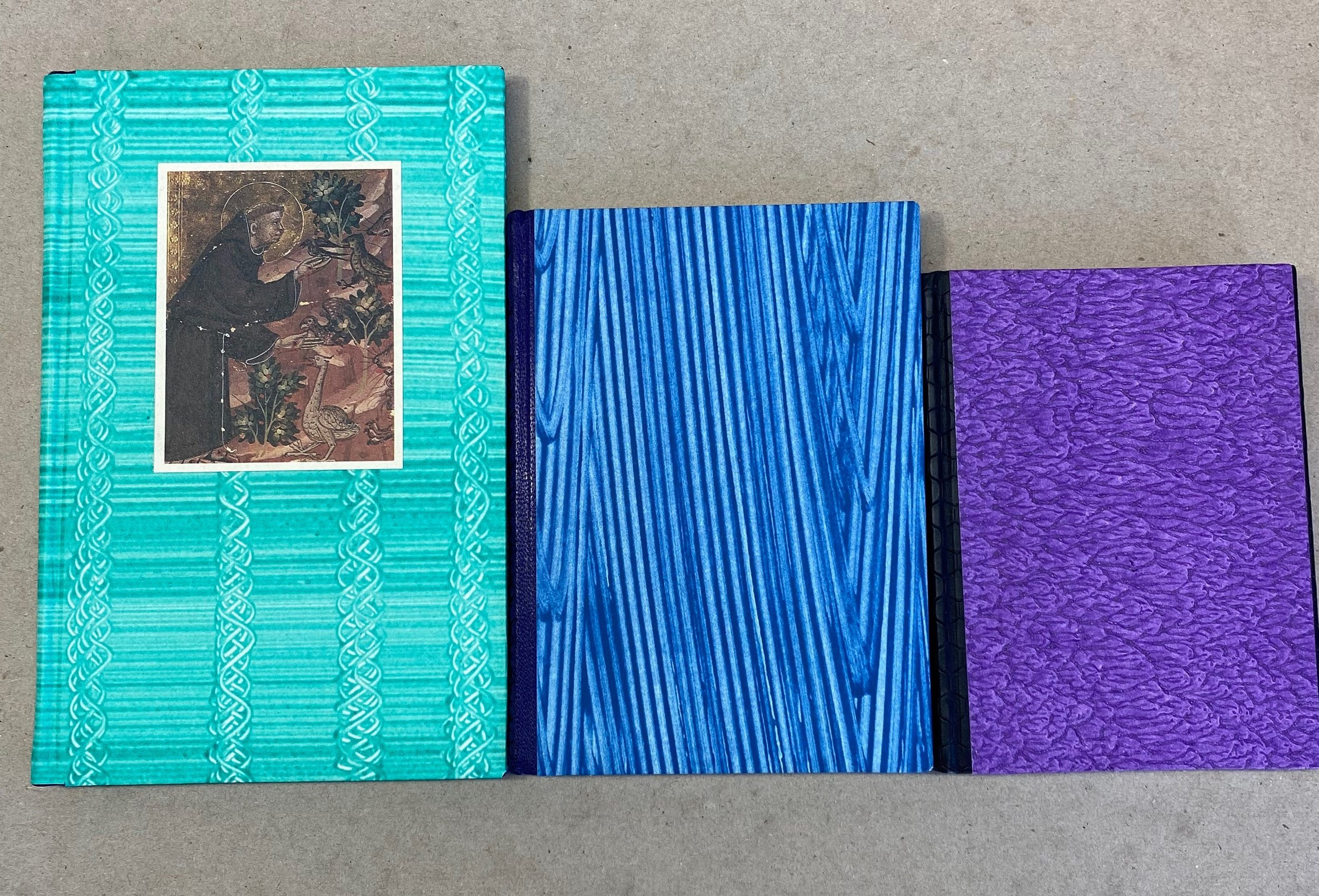
Three different approaches to the millimeter binding.

Paste papers with simple, sometimes geometric designs were popular.
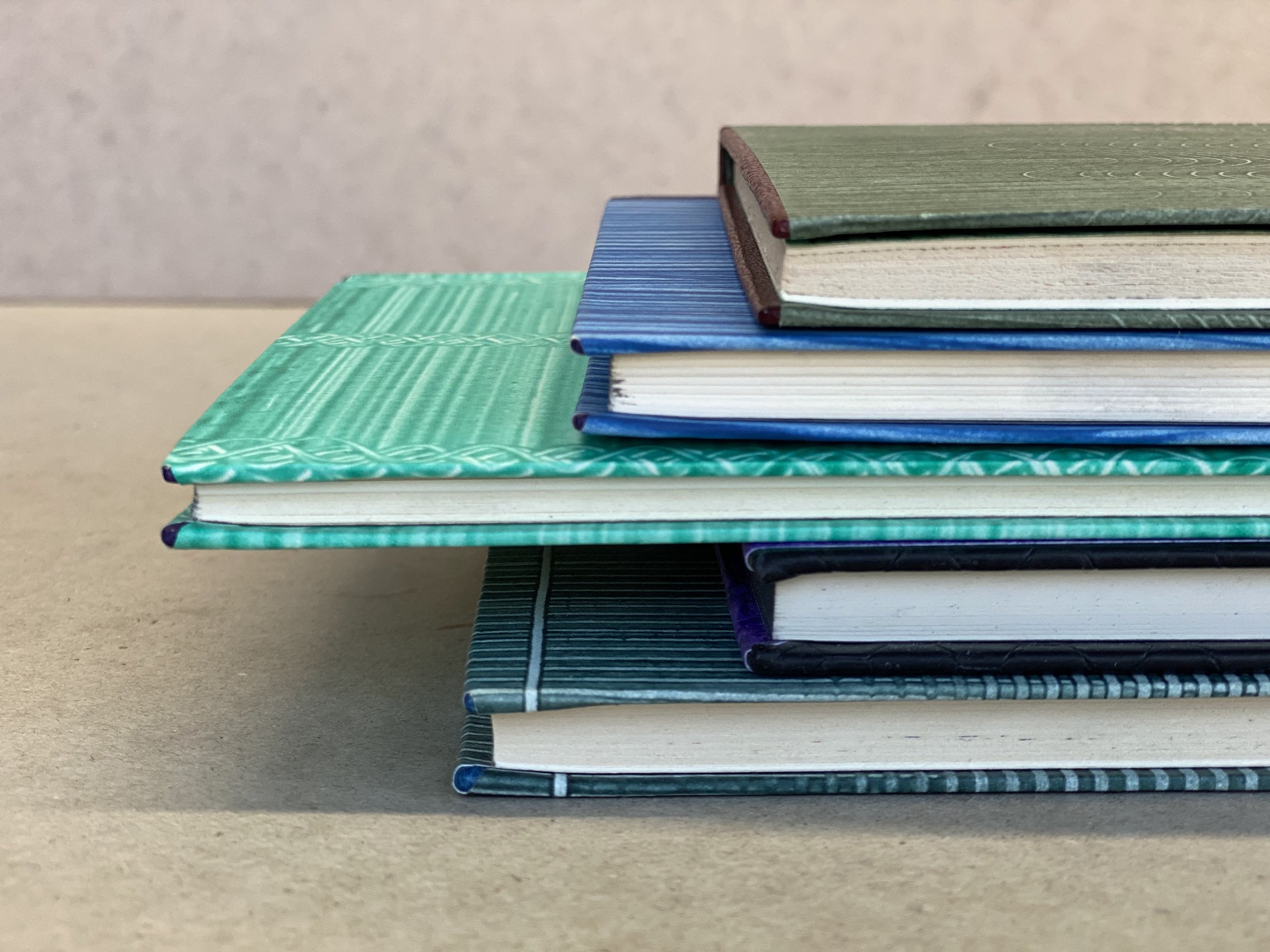
Another view of the different ways leather was used on the millimeter bindings.
